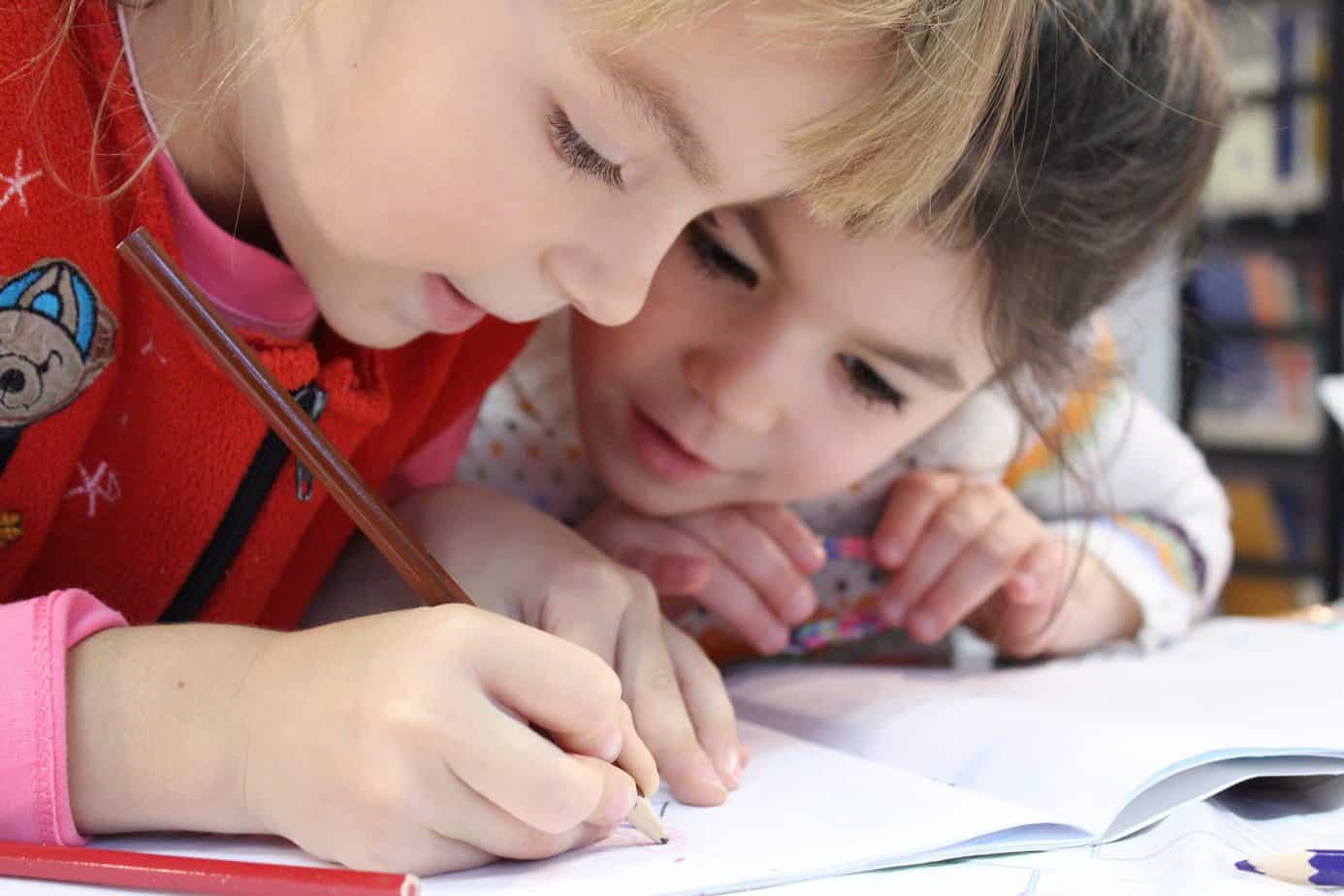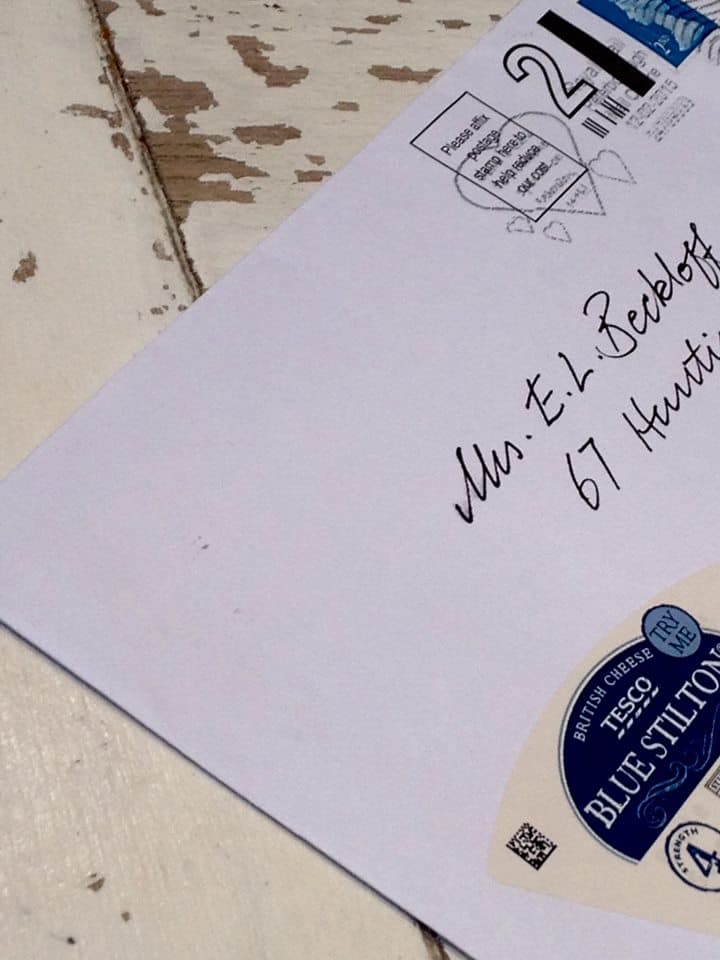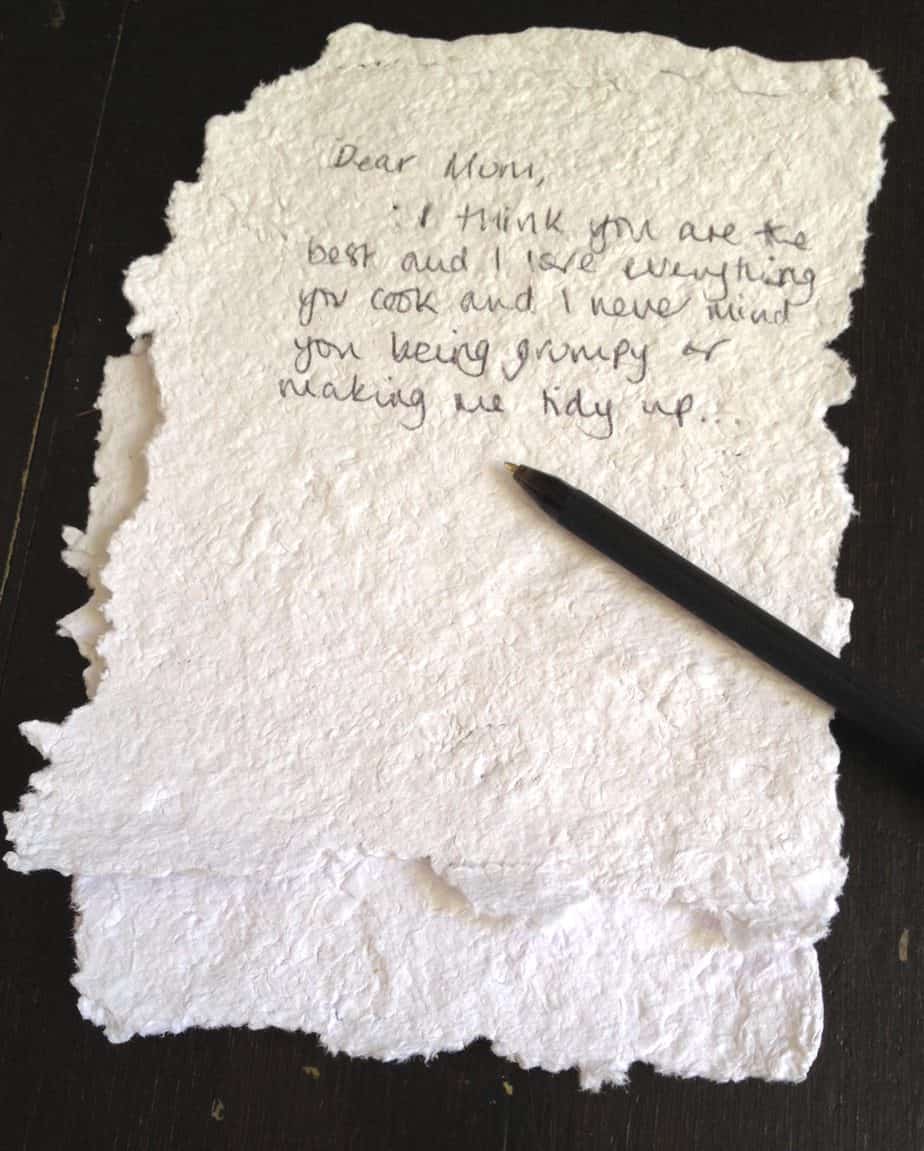
If your child doesn’t find something interesting enough to talk about it, then they’re not going to want to write about it either!
Top Tips For Creative Thinking Below
Writing letters are a brilliant way for children to practise their creative writing and to build their communication skills (though they won’t know that). Unlike other pieces of creative writing, letters have more of a purpose if you like. Children can write something very short and yet have the satisfaction that their handy work is a finished piece of work that will be used (posted and read!).
Working on letter writing skills for children are one of the easiest ways to work on creative writing, and letters are somehow more fun to receive than emails. Despite being in the digital age, we do still need to physically write, both in and outside of school, so it’s an important skill to develop and master!
Even if it’s simply writing their Letter to Father Christmas (or Santa)

Letters are more than just letters though. Receiving them tells a child that someone has spent time thinking of them. It makes them feel cared for. It also gives them something to think about – they’ll try and imagine whatever the person has written to them about, which will spark their creative side.
Letters are also keepsakes that children can treasure and re read over and over again, tucked up in bed or curled up on the sofa.
But it’s too boring …
Letter writing skills for children are all about letting their mind wander and not worrying about fronted adverbials and all that nonsense. It’s to do with creative thinking, communication and having fun! And letter writing skills can be started at any age. As soon as your child can talk (you can write for them) … moving on to them writing the letters by themselves.
So, where do you start?
The key things are …
- Children need to feel motivated enough to want to write.
- Children need to feel there’s no wrong way to do it!
- Notelets or postcards may be just the right size to start with.
- Pictures in letters are fantastic too!
- Encourage them to let their minds wander to the random and the quirky.
- Don’t worry about spelling and grammar. This is about fun!
- Short targets, like finishing a letter rather than a chapter book, will be easier to achieve!
So the trick with any form of creative writing, is to know what kind of things would motivate your child to want to talk about them. What do they like doing, or chatting about at home?
Now I know children can feel really over faced by the whole writing thing, but given a little guidance, it’s very clear that children have a huge amount in their heads, which is all just perfect for putting down in a letter! The trouble seems to be in having the confidence to write it down. I personally think a good place to start is to write as you talk.
Think of a Topic
First, think of a topic. Then have a chat about the weird, quirky, downright silly and made up things too … that’s all good stuff. Children really do come up with the most incredible things! Fear of having nothing to write will stop them even wanting to try, so chat about that first … and when they come up with something, ask them a question that will give you more information about it.
So, something like this …
You could ask them if they would like a sleepover with an alien. Then you could ask them why they’ve answered as they have, and how they would expect an alien sleepover to go. What do Aliens eat? Do Aliens even eat in the middle of the night? Do Aliens sleep in beds, or something else? What kind of films do they like to watch, and are they polite to Mums & Dads?
Soon they’ll have a lot of stuff they could write down about Alien sleepovers, so how about putting that down in a letter to someone?
Other things they could write about in their letter …
Children respond really well to questions, and if they can answer any of these questions (and maybe say why) using at least one sentence, then they’ll have a very entertaining letter at the end of it! They can also ask these same questions to the person they’re writing to.
- Is there anything you would like to know about the person you are writing to? Like what their 3rd favourite reptile is, or whether they have plans for any trips to go anywhere scary …
- If you could have any pet in the world, what would it be and why?
- What’s the bravest thing you’ve ever done?
- If you could have any superpower, what would it be?
- If you could invent something, what would it be?
- Are aliens real?
- What’s happened today that you found funny?
- Is your Mum scared of heights too?
- If you had to write a silly nonsense poem, what would it be about?
- What is your favourite food?
- What did you and your friends / family do today?
- What is your favourite outfit?
- Do you have a favourite TV programme or iPad game / app?
- What do you think you might do at the weekend?
- What book are you reading at the moment and would you recommend it?
- What do you like to do in the evenings and at weekends?
The second thing to think about, is to decide in advance how much of the page you are going to fill. Trust me, that really helps to spur the brain on to do more thinking.
Well, let’s face it, receiving a letter that simply says ‘Dear Cousin Thingy, I went to school today and played in the playground, Lots of love Emily xxx’, isn’t going to be that interesting, and you are highly unlikely to want to write back. But what if you received something (still very short, childlike and simple) that said …
Dear Cousin Thingy,
Do you have any pets? I would like a lion so it could roar at anyone who asked me to do any homework. I just want to go to the park and climb trees really. I climbed one yesterday that was so high it made three mums in the park start jumping up and down and waving at me. They must have been really impressed. I hope we have chips for tea.
Lots of love
Bertie xxx
Although extremely simple, it’s more personable, tells you something about the writer, it’s more fun, and is more likely to inspire a reply. Hopefully with some fun questions back!
Now, handwriting ability and muscle strength can be an issue, BUT practise is exactly the right way to go about building these skills and muscles up. The National Handwriting Association has some really helpful tips.
Choose some fun paper!
How about black paper with gold pen, or other coloured paper? Maybe the finest white stationery from Paperchase may just be the thing to make them want to sit down and write. Letters can even be written on the back of shopping lists, or anything else your child may fancy.
If you’re feeling very creative, this is a super easy way to make some gorgeous Homemade Paper!
Put your address on the top!
If they would like a letter back that is. It’s also a very helpful way to tell the recipient exactly which ‘James’ the letter is from.
Write as clearly as possible
The easier it is to read, the more engaged the reader will be!
Add your signature …
Which could well be in the form of stickers from unexpected sources (My dad always does this) …

Finding someone to write to …
- How about writing to a sick child and / or their siblings and brightening up their day? Post Pals is a fabulous website for this, though you mustn’t expect a reply …
- Or, how about writing to a cousin, or another relative? Parents, you can always prime them and encourage them to reply!
My main message is to have fun and forget about technical correctness!
You may also like:
Supporting Unsure Young Writers
Practise Handwriting Skills : By Kids For Kids



Leave a Reply